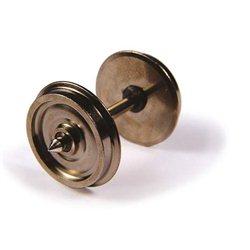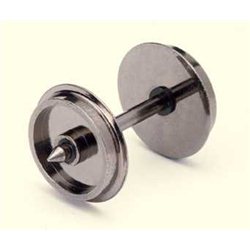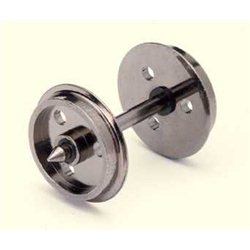An electromagnetic decoupler is a valuable addition to any model railway layout. It provides several benefits that...
No products
Product successfully added to your shopping cart
There are 0 items in your cart. There is 1 item in your cart.
Search Tips
Should I replace plastic wheels on wagons with metal alternatives to help longevity and to help avoid derailing?
Replacing plastic wheels on model railway wagons with metal alternatives can help to improve longevity and reduce the risk of derailing, but it is important to consider several factors before making this decision.
Metal wheels are typically more durable and long-lasting than plastic wheels, as they are less prone to wear and damage. They are also typically more resistant to heat and other environmental factors that can cause plastic wheels to deteriorate over time. Additionally, metal wheels often provide better electrical conductivity, which can be important for certain types of model railways.
On the other hand, metal wheels are often more expensive than plastic wheels and can be more difficult to install and replace. They are also typically heavier, which can put additional stress on the motor, gears, and other components of the locomotive and wagons.
It is important to consider the type of model railway in question and the specific requirements of any wagons and locomotives before making a decision about replacing plastic wheels with metal alternatives. If a modeller is experiencing specific issues with plastic wheels, such as frequent derailing or rapid wear, then replacing them with metal wheels may be a good option. However, replacement may not always be the best solution, as it can in some circumstances lead to other issues, such as poor performance or damage to the tracks.
In conclusion, replacing plastic wheels on model railway wagons with metal alternatives can be a good way to improve longevity and reduce the risk of derailing, but it is important to carefully consider the specific requirements before making this decision.
Click here to receive the tips weekly in your mailbox. You can unsubscribe at any time.










